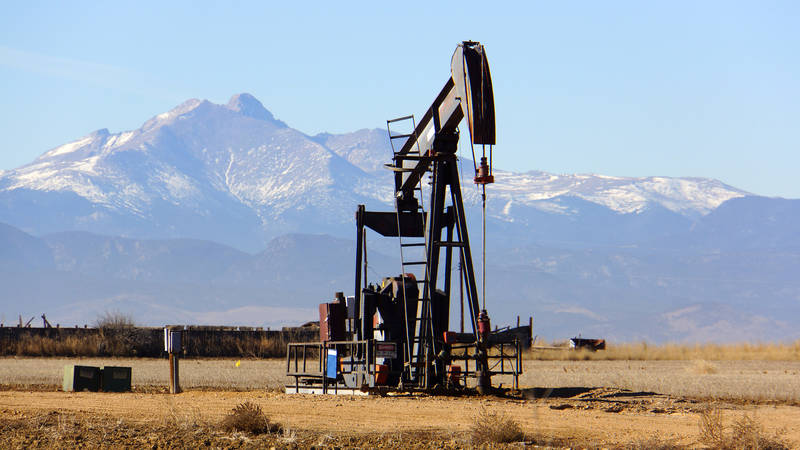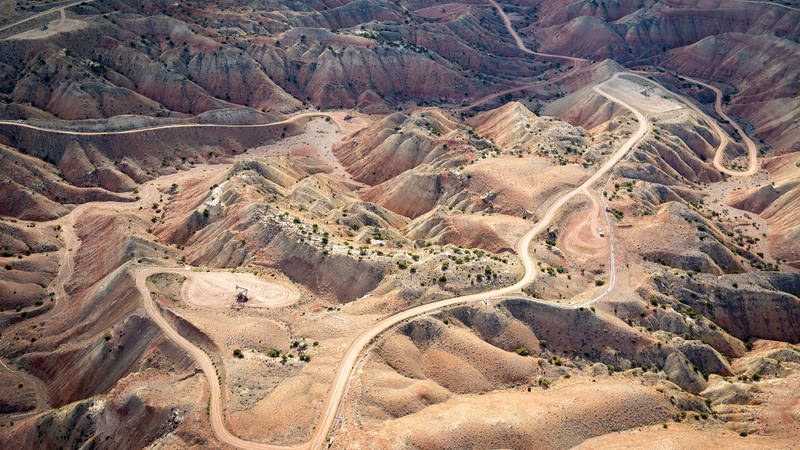A coalition of elected officials, tribal leaders, business owners, outdoor enthusiasts and public land advocates successfully pressured the Bureau of Land Management to remove Moab-area parcels from its oil and gas lease sales next month.
Since the Trump administration took office in 2017, the acreage of federal lands that have been leased for oil and gas development has skyrocketed, particularly in the West.

The 12 Parks Most Threatened by Oil & Gas Drilling
Oil and gas development threatens the future of national parks. NPCA’s new report, “Spoiled Parks,” highlights what we stand to lose in the face of the current administration’s energy…
See more ›Yet, when the Bureau of Land Management announced in May that it would put 110,000 acres up for auction in Utah this September, the number was staggering, even by recent standards. Worse, more than 85,000 of those acres were dangerously close to Arches, Canyonlands and Capitol Reef National Parks, as well as nearby Bears Ears National Monument — irreplaceable public lands with important cultural sites, including unique pictographs, petroglyphs and spectacular red rock landscapes with enormous recreational value.
NPCA and our supporters and allies spoke out vehemently against committing these lands to oil and gas development, and after months of fighting hard against the proposal, the bureau removed those 85,000 acres nearest national parks from the sale — at least for now.
These lands represent all of the Moab-area parcels as well as a separate parcel near Capitol Reef National Park. Although NPCA has won similar victories preventing leasing in other parts of the country, this is the largest acreage NPCA and our allies have successfully protected from oil and gas development — an amount of land larger than Arches National Park.
There are a number of reasons a broad coalition stood up to fight for the protection of this land.
Threats to a Recreational Mecca
The national parks of the Moab region are world-famous for their sculpted canyons, towering red rock formations, starry skies and postcard-perfect beauty. These parks are part of an interconnected and culturally significant landscape that draws tourists from all over the globe. According to the National Park Service, the national parks in Utah collectively generated $1.2 billion in visitor spending, supporting 18,900 jobs and $614 million in labor income in 2019 alone.
Yet, parks in this region and other parts of the Southwest are at constant risk of industrialized drilling operations nearer and nearer to their borders. The massive infrastructure required to extract oil and gas destroys the area’s expansive views while creating barriers on the landscape and threatening to destroy ancient cultural sites that hold deep significance to Native American tribes and communities. The noise from drilling affects the solace and character of the region, the dust can harm air quality, and the light pollution can interfere with nocturnal wildlife and harm the exceptionally dark night skies the region is famous for.
More than 100 small businesses joined NPCA and many others in opposition to the lease sale, representing a united effort to stop the harm the oil and gas industry is already having on the tourism economy. Elected officials at the city, county and federal levels also actively opposed these leases.
Tribal Communities Excluded from the Process
The Hopi Tribe also submitted a letter to the Bureau of Land Management opposing the lease sale, revealing another fundamental problem in the process. The letter noted that it is simply not possible for the agency to adequately consult with tribal governments while COVID-19 remains a health crisis in the region — and including tribal input is a critical step in the leasing process.
Bureau of Land Management guidelines require agency officials to consult with tribal governments before leasing parcels for oil and gas development. Utah’s lands are sacred to many Native American cultures, and too frequently, federal officials do not even know when developing a parcel could affect cultural sites, because these sites have not been adequately inventoried and documented. It is essential that tribal representatives are part of the process to prevent irreversible harm to their cultural history.

Federal Government Unleashing a Flood of Oil and Gas Leases in the West, Leaving Parks Surrounded
NPCA worked with an aerial photographer to document the beauty and threats to five Southwestern parks where oil and gas development is rapidly encroaching on the landscape.
See more ›Yet, many of these required consultations are perfunctory under the best of circumstances, and the COVID-19 pandemic has significantly exacerbated this problem. Native American communities in the Southwest have been hit hard by the virus, and in addition to the strain that coping with the crisis has put on these communities, many tribal members also lack the access and capacity to participate in online meetings and comment periods.
Members of the Navajo Nation are also important stakeholders in the leasing process, but the community has suffered devastating infection and fatality rates from COVID 19, and many have been living under extended stay-at home orders. All of this severely affects the ability to engage in the democratic process.
Leases should simply not be offered for sale when tribal governments cannot adequately weigh in with concerns about how their ancestral lands could be used.
A Terrible Deal for Taxpayers
Over the last several years, the Trump administration has leased 5.2 million acres of public land to industry, and a million of these acres have sold at auction for a mere $2 each. Millions more acres that were not bid on are now available to any oil and gas developer at $1.50 per acre. These leases last for a minimum of 10 years, shaping what a place could look and feel like for an entire decade.
Yet the market for oil and gas is depressed. The prospects for profitable wells in this region are low. The Trump administration has started giving energy companies temporary breaks on the royalties and rent they pay to extract oil and gas from public lands in the Utah. The leases are generating little in the way of revenue for the government, yet the leasing process locks up thousands of acres of land — that could otherwise provide tourism benefits to the region — for a single extractive use.
To attempt to lease prime recreational acreage that is sacred ancestral land to several tribes while in a depressed energy market simply does not make fiscal sense.
A Land Grab by ‘a Guy Named Craig’
The original proposal to lease these 110,000 acres was problematic, in part, due to legal provisions that allow anyone to nominate federal lands for sale, regardless of any conflicts of interest — and the person or company making the nominations can do so anonymously. In this case, many of the parcels were nominated in one fell swoop by attorney Craig Larson of Prairie Hills Oil & Gas in North Dakota, or as environmentalist Bill McKibben described him in a recent New Yorker story, “a guy named Craig” who “may soon have control over a large swath of Utah.”
“Larson does not seem like a villain to me here, and he’s done nothing illegal,” McKibben emphasized in his story. “In fact, what’s preposterous is how entirely legal it all is.”
Few in the community expected someone to nominate so much land with such little energy development potential for sale in a depressed market. That a broad coalition had to fight hard for months to prevent the government from handing over public land to private interests in this way highlights fundamental flaws in the nomination process.
What Happens Now?
The 85,000 acres removed from next month’s lease sale were deferred, not eliminated from consideration, so it is still possible they could be nominated for future development. Typically, however, the Bureau of Land Management will conduct additional reviews before nominating a parcel that was deferred, lowering the likelihood of seeing these parcels up for lease again in the short term — and the opposition of our allies and advocates remains strong.
Stay On Top of News
Our email newsletter shares the latest on parks.
We hope that the bureau will continue to recognize and honor the widespread outcry that halted the sale of these parcels, especially since we are hearing the same cry around other lease sales across the West. Yet, this victory also highlights the need for stronger reforms. In addition to identifying and fighting to protect future parcels with the potential to harm park sites, NPCA will continue to push for:
- Earlier and more significant tribal involvement
- The elimination of anonymous leasing nominations
- Policies that emphasize leasing lands for their market value, not their political value
- A fair and balanced process that brings a range of stakeholders to the table
- Greater transparency in how parcels are selected and approved
We are grateful to the thousands of people who stood with us and spoke out to protect these incredible lands. Our many voices together resulted in this important victory, and we will continue to raise our voices whenever our parks come under threat.
About the authors
-
 Erika Pollard Campaign Director, Southwest Region, Southwest
Erika Pollard Campaign Director, Southwest Region, SouthwestErika is a campaign director in the Southwest region. She focuses primarily on issues concerning the national parks in Utah.
-

-
General
-
- NPCA Region:
- Southwest
-
Issues


